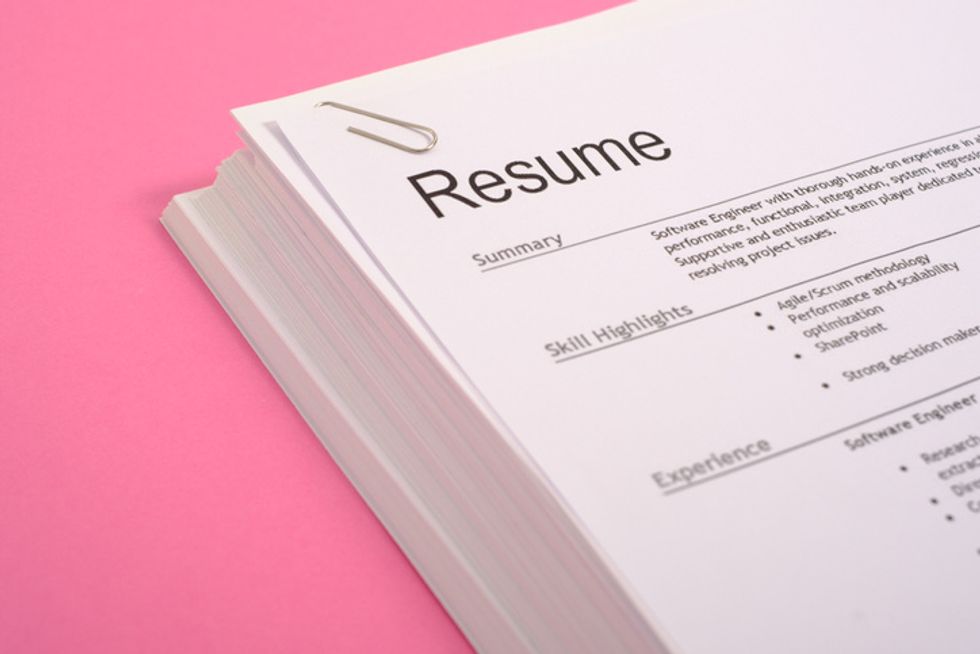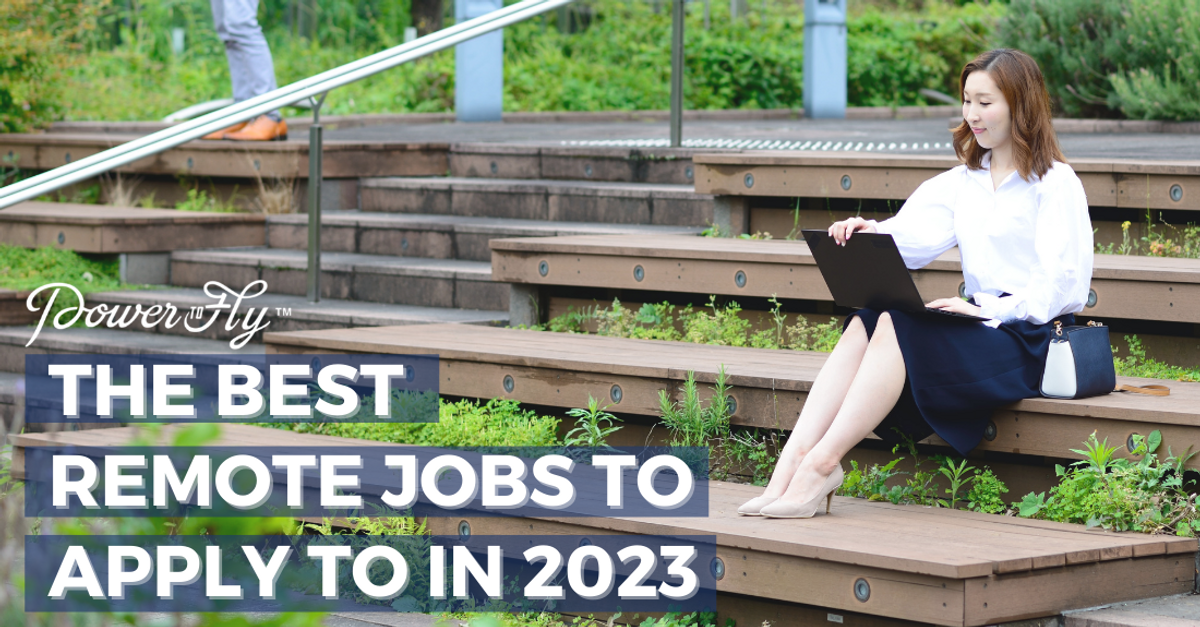Remote jobs sometimes get a bad reputation: low pay, repetitive work, micromanagement... the list goes on. Three years after the onset of the pandemic, working from home has reshaped the modern workforce. Remote work has evolved, and the opportunities to work from home in 2023 are more promising than ever before.
If you're like me, and freelance, task-oriented remote jobs like article writing, data entry, transcription, or professional survey taking (yep, that exists), aren't your thing — don't worry. There are more full-time remote opportunities than ever before that offer you the freedom to manage your own time, the security of consistent monthly income, the support of a team, and the promise of growth. In fact, we've got over 5,000 on PowerToFly.
So, if you're looking for a remote / work-from-home opportunity in 2023 that will push you to develop professionally, look no further than our list of the 10 best remote jobs. And by best, we mean fun, challenging roles that will help you grow, while making a respectable income.
All the jobs listed have average salaries between 54 and 150k, and have average or higher-than-average growth potential (based on the U.S. Bureau of Labor Statistics' predictions for growth from 2021 to 2031 and LinkedIn’s 2022 Jobs on the Rise List).
10 Best Remote / Work-From-Home Jobs for 2023
Jobs are sorted from highest to lowest average salary. (Salary data taken from ZipRecruiter, Glassdoor, LinkedIn, and/or the U.S. BLS depending on availability.)
1. Data Scientist

Who It's Good For: Detail-oriented stats masters skilled at identifying and understanding trends.
Sound Like You?Check Out: Remote Data Science Roles. Plus, watch this Chat & Learn with a data insights engineer to learn more about data-driven careers.
Why You Can Do It Remotely: With more data than ever before at our fingertips, companies know the value of hiring folks who know "big data" as more than just a buzzword. True stats buffs are hard to come by, so expertise often outweighs location.
Growth 2021-2031: 36%
Annual Growth: 37%
Average Annual Salary: $145,018
2. Software Developer/Engineer

Who It's Good For: Self-directed (and disciplined) coding enthusiasts who love problem solving and having the freedom to work whenever they feel most focused.
Sound Like You? Check Out: 5,500+ remote Software Developer/Engineer jobs on PowerToFly and be sure to check out this Q&A with Software Engineer Kasey Champion to learn about her experience working at a fully remote company and get her tips for acing technical interviews!
Why It Can Be Done Remotely: Arguably, not only can programming be done remotely — it should be! Why? Writing code requires undisturbed blocks of time rarely found in traditional workplaces.
As computer scientist and entrepreneur Paul Graham observed in his essay on makers' vs. managers' schedules:
"Most powerful people are on the manager's schedule...But there's another way of using time that's common among people who make things, like programmers and writers. They generally prefer to use time in units of half a day at least. You can't write or program well in units of an hour. That's barely enough time to get started."
Office culture was designed with managers' schedules in mind, and thus makes adhering to a maker's schedule extremely difficult. Remote work, alternatively, is much more conducive to this. After all, it's a lot easier to snooze your Slack notifications than it is to ignore your boss literally hovering over your shoulder.
Growth for 2021-2031: 25%
Average Annual Salary: $120,969
3. Designer (Web, Graphic, Product, or UI/UX)

Who It's Good For: Designers who do their best work independently or from the comfort of their own home.
Sound Like You? Check Out: Remote Design Roles
Why You Can Do It Remotely: No doubt there's value in brainstorming with your team, but once you know the needs of a project, most design work can be done independently and then shared. With tools like Zoom, Jira, and Slack, it's easier than ever before to share your work, get feedback, and hit deadlines. (And, like programmers/developers, designers are also more likely to benefit from a maker's schedule!)
Growth for 2018-2028: The BLS predicts only 3% growth, but others predict significantly higher demand for certain creative roles.
Average Annual Salary for UX Design: $100,323
Average Annual Salary for Graphic Design: $54,612
4. Technical Product Manager

Who It's Good For: Anyone who loves big-picture strategy and building products that users will love.
(If you enjoy more nitty-gritty task oversight, consider project management instead — both roles can be done remotely! You can learn more about the differences between the two PM roles here.)
Sound Like You? Check Out: Remote Technical Product Manager Jobs (Plus, practice these product manager interview questions to help you land the gig!)
Why You Can Do It Remotely: As more and more software engineers and other tech professionals work remotely, it only makes sense that the technical PMs coordinating with them work remotely. If you're a virtual communication wiz comfortable communicating online and using tools like Zoom, GitHub, Jyra, Slack, and Asana (the list goes on...), then you're all set!
*BLS doesn't currently track growth specifically for technical product managers, but technical PMs were on LinkedIn's 2022 list of the top 25 fastest growing roles in the U.S.
Average Annual Salary: $135,970
5. Diversity & Inclusion Manager

Who It's Good For: HR professionals or creative and strategic individuals who have experience developing and implementing diversity initiatives and strategies.
Sound Like You? Check Out:Remote Diversity & Inclusion Manager
Why You Can Do It Remotely: DEIB experts work closely with every team in an organization. They can ensure that diversity agendas are successfully implemented and in line with the business's objectives for everyone, hybrid and remote teams included.
Growth: BLS doesn't currently track growth specifically for diversity & inclusion managers, but D&I managers were on LinkedIn's 2022 list of the top 25 fastest growing roles in the U.S.
Average Annual Salary:$74,000
6. Customer Success Specialist

Who It's Good For: Good communicators who love helping others and problem-solving.
Sound Like You? Check Out: Remote Customer Success Roles
Why It Can Be Done Remotely: Most customer service needs can be met over the phone and online. With a computer and a good internet connection (and some patience), you can handle all your customers' needs from wherever you are.
Growth: BLS does not currently track growth for Customer Success Managers/Specialists, but a 2020 study from LinkedIn reported that this is a role that can anticipate future growth. Customer Success Specialist was the sixth fastest-growing role in the U.S. in 2020 and the future of Customer Success seems bright.
Average Annual Salary: $63,217
7. Marketing Manager

Who It's Good For: Folks who are equal parts creative and analytical.
Sound Like You? Check Out: Remote Marketing Manager Jobs on PowerToFly
Why You Can Do It Remotely: Analyzing industry trends and crafting strategy can be done from anywhere. And with teams becoming more and more spread out, you can coordinate cross-functionally with sales people, engineers, and more using Zoom, Slack, and other online tools.
Growth for 2021-2031: 10%
Average Annual Salary: $68,814
Average Median Salary: $133,00 in 2021, according to the U.S. BLS
8. Sales Development Representative

Who It's Good For: A self-starter with previous experience or an interest in Sales, or anyone who's just starting out and eager to prove themselves!
Sound Like You? Check Out: Remote SDR Roles
Why You Can Do It Remotely: You don't need to be in a particular location to make sales calls, deliver pitches, send follow-up emails, or manage your sales team. And if you have to fly from an office to meet a client, you can just as easily fly from your hometown. Annual growth for SDR roles is anticipated as being steady over the next ten years.
Growth for 2021-2031: 5%
Median Annual Salary for SDRs: $71,937
9. Technical Writer

Who It's Good For: Top-notch communicators (writers) who can explain complex topics succinctly and clearly. (It's helpful if you have expertise in at least one technical subject.)
Sound Like You? Check Out: Remote Technical Writer Jobs
Why It Can Be Done Remotely: Like programmers, technical writers are makers - they need large, undisturbed blocks of time to create content. Technology and the nature of remote work can help ensure writers are able to communicate efficiently with their teams and organize meetings when they'll be constructive, not distracting. For many writers, working remotely is key to their success.
Growth for 2021-20231: 6%
Average Annual Salary: $61,980
10. Recruiter

Who It's Good For: A people-person skilled in market research, project/time management, and negotiation.
Sound Like You? Check Out: Remote Recruiting Roles
Why You Can Do It Remotely: As remote work takes off and fully remote teams become more common, it makes sense that recruiters at these companies work remotely as well. Although recruiting saw a dip at the start of the pandemic, the number of remote recruiting roles is steadily increasing—we have over 1,000 open remote recruiter roles on PowerToFly!
Growth for 2021-2032: 8%
Average Annual Salary: $54,211
-----
Interested in one of the above career paths? Check out open roles today!
[A version of this article was originally published on Dec. 19, 2018]



